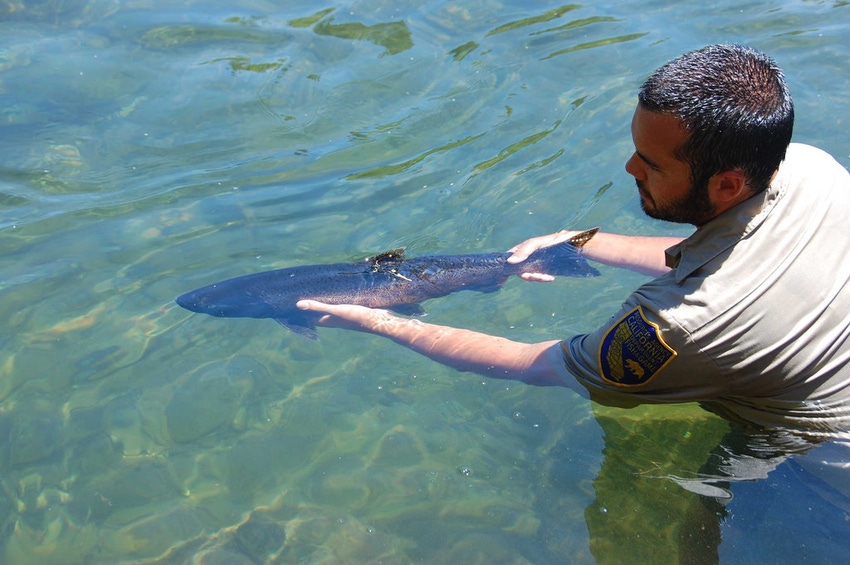August 30, 2016

If none of this were true this would sure make a great piece of fiction – except that it is true. It’s not fiction.
A recent Modesto Bee editorial illustrates a level of absurdity among California’s agencies that may actually be malfeasance.
The photo says it all, though I encourage you to read the entire editorial, particularly if following California’s water woes hasn’t been your thing. I understand if it hasn’t – the politics of it all is enough to cause brain hemorrhaging.
Reading this was educational. While I knew that bass were not native to the Delta region and that they dine on fish the State of California claims it wants to save, I did not realize that, based on the Bee editorial, the California Fish and Game Commission apparently has more to do with declining salmon and smelt populations than farmers, though it doesn’t surprise me.
It’s rather ironic that one state agency and its agricultural and research partners can be hailed for eliminating an invasive species, while elsewhere in Sacramento other government officials are trying to protect invasive species to the detriment of native species and human beings.
I’m referring to the recent announcement that California eradicated the European grapevine moth, a pest native to Europe that several years ago was found in a Napa County vineyard after it destroyed an 11-acre block of Chardonnay grapes.
We recently published that success story after reporting on the process growers, government and university researchers used to reach that end.
If we were to follow the philosophical trail used by agriculture to reduce or remove pest invasions from our farmlands then the natural thing to do would be to eradicate bass from California’s Delta region.
Until we do, any attempts at protecting the habitat for smelt or increasing salmon numbers in our river systems will continue to be two steps forward and three steps back.
You May Also Like




